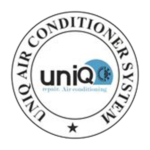Window AC Repair: Staying Cool and Comfortable
Window air conditioning units are popular for their affordability and efficiency in cooling small to medium-sized spaces. However, like all appliances, window AC units can develop issues over time that affect their performance. In this comprehensive guide, we’ll explore window AC repair, including the importance of these units, common signs of problems, do-it-yourself troubleshooting steps, when to seek professional help, and preventive measures to keep your window AC unit running efficiently. By understanding the fundamentals of window AC repair, you can ensure that your unit continues to provide the cool comfort you need during hot summer months.
Table of Contents
- The Significance of Window AC Repair (200 words)
- Importance of reliable cooling
- Extending the lifespan of your window AC unit
- Saving on energy costs
- Avoiding major breakdowns
- Common Signs of Window AC Problems (250 words)
- Inadequate cooling
- Unusual noises
- Leaking water
- Reduced airflow
- Increased energy consumption
- The Importance of Regular Maintenance (300 words)
- Cleaning air filters and coils
- Checking the condensate drain
- Tightening electrical connections
- Lubricating moving parts
- Benefits of professional maintenance
- DIY Troubleshooting for Window AC Issues (400 words)
- Step 1: Check the Thermostat
- Step 2: Inspect and Clean Air Filters
- Step 3: Examine the Cooling Coils
- Step 4: Clean the Condensate Drain
- Step 5: Tighten Electrical Connections
- Step 6: Lubricate Moving Parts
- Step 7: Inspect the Fan Blades
- Step 8: Test the System
- When to Call for Professional Window AC Repair (250 words)
- Refrigerant issues and leaks
- Complex electrical problems
- Compressor or fan motor malfunctions
- Warranty considerations
- Preventive Measures for Window AC Maintenance (200 words)
- Regular professional inspections
- Seasonal readiness checks
- Proper installation and sizing
- Energy-efficient operation
- Conclusion (100 words)
- The critical role of window AC repair in maintaining comfort and efficiency
- The value of regular maintenance and timely issue resolution
- Ensuring reliable cooling for years to come
1. The Significance of Window AC Repair
Window air conditioning units are prized for their ability to provide relief from sweltering summer heat. To appreciate the significance of window AC repair, consider the following factors:
Importance of Reliable Cooling: Window AC units are relied upon to provide cooling when needed most, ensuring that indoor spaces remain comfortable during hot weather.
Extending the Lifespan of Your Window AC Unit: Regular maintenance and timely repairs can significantly extend the lifespan of your window AC unit, saving you from the cost of premature replacement.
Saving on Energy Costs: A well-maintained window AC unit operates efficiently, reducing energy consumption and leading to lower utility bills.
Avoiding Major Breakdowns: Addressing minor issues through regular repair and maintenance can prevent them from escalating into major breakdowns that could disrupt your comfort and incur significant repair costs.
Understanding the significance of window AC repair empowers homeowners to take proactive measures to ensure their units operate optimally.
2. Common Signs of Window AC Problems
Recognizing common signs of window AC problems is crucial for prompt intervention. Here are some indicators that your window AC unit may be experiencing issues:
Inadequate Cooling: If your window AC unit struggles to maintain the desired indoor temperature, it may indicate reduced cooling efficiency.
Unusual Noises: Unusual sounds such as grinding, rattling, or hissing coming from your window AC unit can signal underlying issues requiring attention.
Leaking Water: Water dripping or pooling around your unit, or excessive condensation, can indicate drainage problems or refrigerant leaks.
Reduced Airflow: If the airflow from your window AC unit feels weak or inconsistent, it may suggest problems with the fan or cooling coils.
Increased Energy Consumption: A sudden increase in energy bills without a corresponding increase in cooling usage may indicate reduced system efficiency.
Recognizing these signs enables homeowners to diagnose potential window AC problems and take appropriate action to resolve them.
3. The Importance of Regular Maintenance
Regular maintenance is essential for keeping your window AC unit in peak condition. Here are some key maintenance tasks that can help prevent issues:
Cleaning Air Filters and Coils: Regularly cleaning or replacing air filters and cleaning coils ensures proper airflow, reduces strain on the system, and maintains indoor air quality.
Checking the Condensate Drain: Inspecting and clearing the condensate drain prevents water accumulation and potential damage to the system.
Tightening Electrical Connections: Regularly checking and tightening electrical connections ensures safe and reliable operation.
Lubricating Moving Parts: Proper lubrication of moving parts reduces friction and extends the lifespan of components such as fan motors and bearings.
Benefits of Professional Maintenance: Annual professional inspections and maintenance can catch potential issues early, improve system efficiency, and extend the lifespan of your window AC unit.
Incorporating these maintenance tasks into your routine empowers you to enhance the performance and longevity of your window AC unit.
4. DIY Troubleshooting for Window AC Issues
While some window AC issues require professional expertise, there are several troubleshooting steps that homeowners can take to address minor problems. Here’s a step-by-step guide for DIY troubleshooting:
Step 1: Check the Thermostat:
Begin by ensuring that the thermostat is set to the desired temperature and cooling mode. Replace thermostat batteries if necessary.
Step 2: Inspect and Clean Air Filters:
Inspect the air filters and clean or replace them if they are dirty or clogged. Clean filters promote efficient airflow and better indoor air quality.
Step 3: Examine the Cooling Coils:
Check the cooling coils for dirt or dust buildup. Clean them if necessary, as dirty coils can reduce cooling efficiency.
Step 4: Clean the Condensate Drain:
Inspect the condensate drain to ensure it’s not clogged. A clogged drain can cause water leakage, so clear it if necessary.
Step 5: Tighten Electrical Connections:
Check electrical connections and wiring for any signs of loose or damaged components. Tighten connections as needed to ensure safe operation.
Step 6: Lubricate Moving Parts:
Proper lubrication of moving parts, such as fan motors, reduces friction and extends their lifespan.
Step 7: Inspect the Fan Blades:
Examine the fan blades for damage or obstruction. Ensure that the blades are clean and free from debris.
Step 8: Test the System:
Finally, test the system by turning it on and checking for proper cooling and airflow. Ensure that the thermostat is working as expected.
By following these troubleshooting steps, homeowners can often address minor window AC issues on their own.
5. When to Call for Professional Window AC Repair
While DIY troubleshooting can resolve many window AC issues, some problems require professional expertise. Here are some situations in which you should consider calling for professional window AC repair:
**Refrigerant


 Please enter your name and phone number below, We will get back to you soon.
Please enter your name and phone number below, We will get back to you soon.